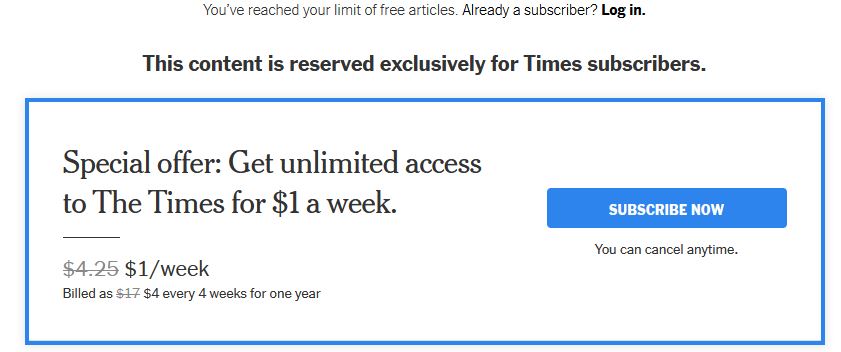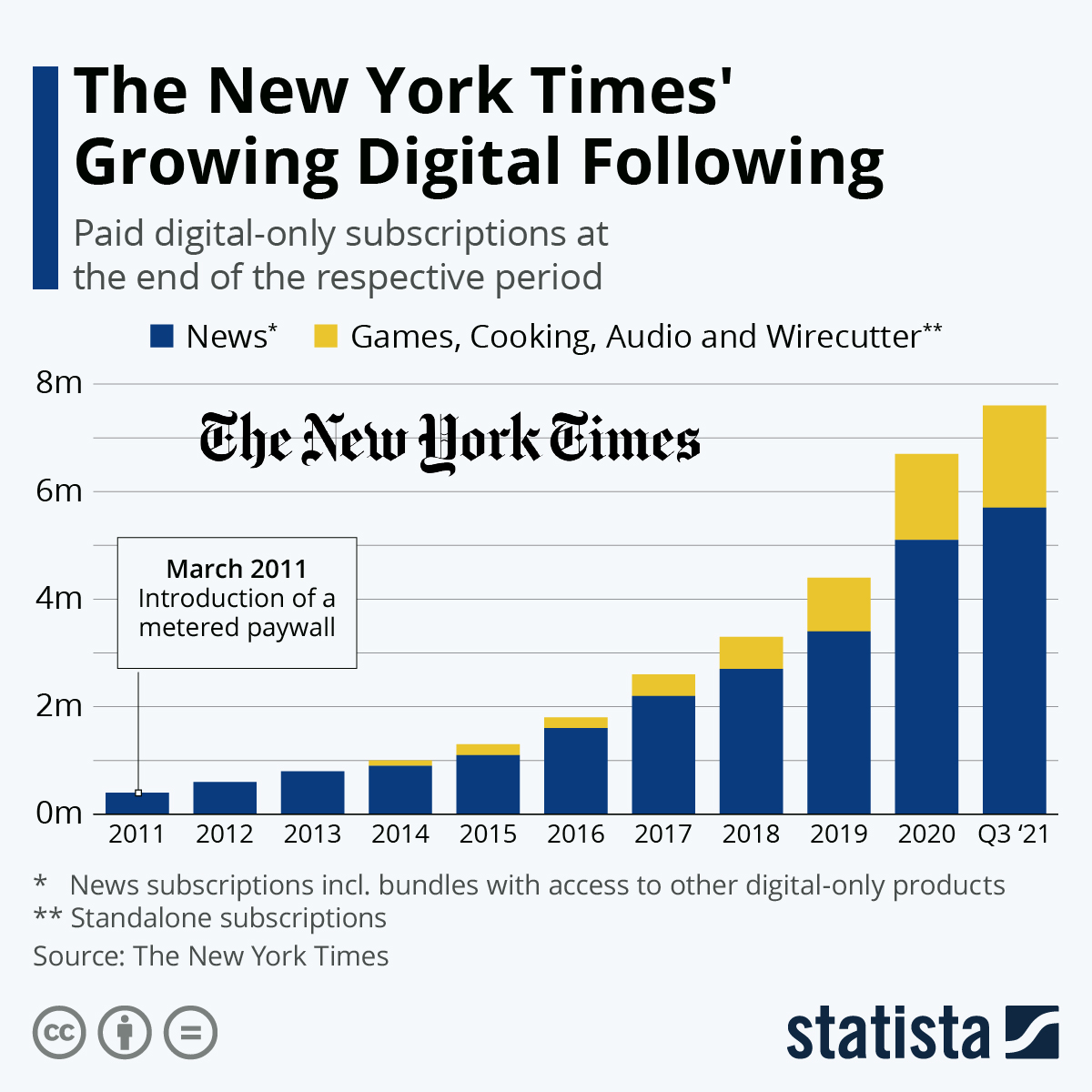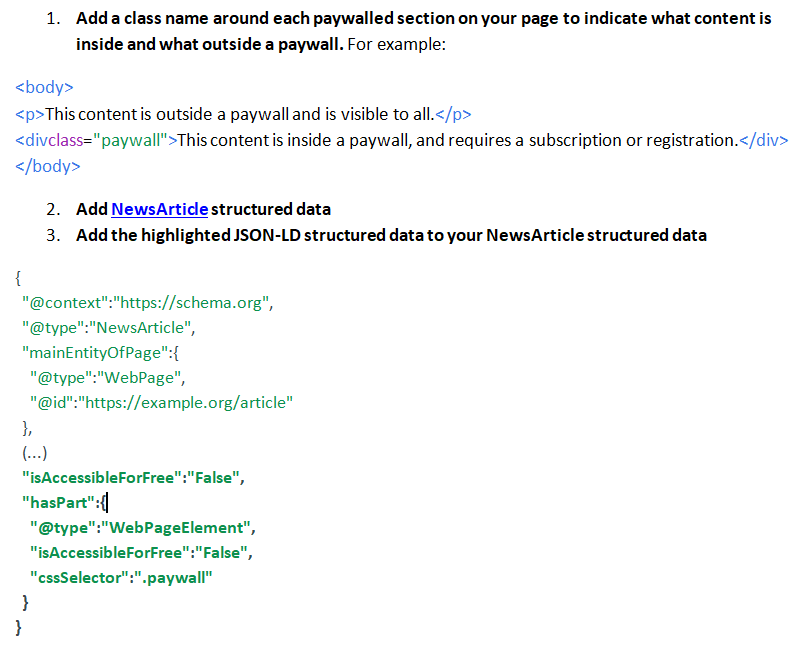SEO For Membership Sites: Getting Around The Paywall via @sejournal, @ChuckPrice518
Can paywalls and SEO coexist? Balancing free and premium content for SEO is tough, but it's possible for paywalled content to rank in organic search. The post SEO For Membership Sites: Getting Around The Paywall appeared first on Search...

Anyone who has done SEO for a period of time has heard the myth of Google’s 200+ ranking factors.
To be fair, the 200 number may have been somewhat accurate, when first mentioned by former Googler Matt Cutts, over a decade ago.
A lot has changed since then, and it’s unlikely that anyone knows the real number of ranking factors baked into the Google algorithm today.
That said, not all ranking factors are created equally.
If you simply focus on the top eight factors with the biggest influence, you will be successful. Those factors include:
High-quality content. Mobile-first. Page experience. Page speed. On-page optimization. Internal links. External links. Local.Here’s the rub: That only works IF your content is visible to Google and available to readers.
What if you put a paywall in front of your content, creating an extra step? Let’s take a look at how to do SEO for membership sites in 2022.
Why Put Your Content Behind A Paywall?
The obvious question is – why put your content behind a paywall if it will affect SEO in the first place?
The drawbacks are quite clear:
Fewer people will see your content if it’s not visible to search engines. You need to make it worthwhile for them to pass through that gate. Some people may give you false information just to see your gated content.That said, there are some benefits to it:
You may get better-qualified leads as people who are willing to give you their personal information are more likely to have a high level of interest. It can help you segment and target your audience better. The audience will often perceive your content as more valuable, useful, and trustworthy (but you must deliver on it).What Does Google Have To Say About Paywalled Content?
Regardless of whether your content is free or premium, you have to follow Google’s guidelines.
The biggest problem for premium content owners is how to be visible in search if their content is not freely available to all users.
To mitigate this, Google initially introduced a First Click Free (FCF) policy.
What that meant was that, in addition to their premium content, publishers had to provide some free content that users could access through Google search.
Suffice it to say that publishers weren’t the biggest fans of this model and it was discontinued in 2017, and replaced with “Flexible Sampling.”
Basically, the newer model gives publishers more maneuvering space in deciding how much of their content they want to provide free to users and how they want to provide it.
There are three options that publishers can choose from in Flexible Sampling.
Freemium
With the freemium model, some articles o
n the site can be accessed without a paywall, while some will have one.
In other words, this is a combination of gated and ungated content.
There’s no specific rule as to which content will be free and which premium, but usually, publishers use popular free content to leverage premium content and entice people to subscribe if they want to read, perhaps a more in-depth article.
Metered
With metered paywalls, the visitor can read a limited number of articles per month before he is being asked to subscribe. Usually, this is three articles, but it can be five or just one for example.
This method is used by several prominent websites, including Medium, The New York Times, and others.
Once you reach the limit, you’ll see a prompt like the one below to subscribe:
 Screenshot by author, February 2022
Screenshot by author, February 2022
Hard Paywalls
The previous two methods are known as “soft” paywalls as they allow the visitor to see at least a few articles or even just a part of the content.
With “hard” paywalls, all content is gated off.
This means that content can’t be crawled or indexed by Google or other search engines. Obviously, this makes it much harder to get new signups, but if the content is of high value, the conversion rate can be much higher.
Although perhaps the least liked of all paywall methods, hard paywalls are still used by some top-tier websites in finance and other industries such as the Wall Street Journal, Financial Times, and others.
 Screenshot by author, February 2022
Screenshot by author, February 2022
So Which Of The Three Is The Best Option?
This largely depends on the purpose of your content.
News platforms, such as the New York Times, have had good success with metered content. This model allows visitors to get a good idea of the quality of their content, by providing full samples as “teasers” to entice users to subscribe.
The NY Times, for example, introduced metered subscriptions back in 2011, and today, a decade or so later, 7.6 million out of 8.4 million total subscribers are digital subscribers, while only around 795,000 are print subscribers.
Here’s a chart of how their digital-only subscriptions grew from 2011 to 2021:
 Screenshot by author, February 2022
Screenshot by author, February 2022
The Freemium method makes sense for a website that already has a large and loyal reader base, different kinds of content, and exclusive content.
Balancing Free & Premium Content
Free content has a clear advantage over premium content when it comes to organic search, due to its sheer volume. This doesn’t mean that premium content publishers will be devoid of organic search opportunities.
In fact, one could argue that engaging in SEO is MORE important for subscription sites, as they have an extra hurdle (paywall) to clear.
Premium content publishers actually have two good options:
They can seek to find a balance between free and premium content like the New York Times does. Or they can create content that readers are searching for, but can’t get anywhere else. This content essentially needs to be exclusive.In other words, one can’t put just any type of content behind a paywall.
Basic articles such as “How to Optimize Your Website for SEO” number in the thousands (millions?) on the web and can be found with a quick Google search for free. Users have no reason or motivation to pay for that kind of content.
On the other hand, if a publisher puts considerable effort into discovering a need and then creating a solution in the form of a whitepaper, ebook, or in-depth article, they can justify putting their specialized content behind a paywall.
If the content is authored by a renowned expert, so much the better.
In deciding whether to gate content or not, it may be a good idea to consider the following three questions.
1. What Is The “End Game”?
Are you looking to increase subscribers or generate leads? If so, then content should probably be gated in some way.
However, if you are looking to generate more visitors and links, the gating approach will be counterproductive.
2. Is The Content Worth Paying For?
Put yourself in the user’s shoes and answer this question: “Is this content valuable enough for me to pay for it or fill out a form?”
Be careful when answering this question. As the creator or curator of content, pride in authorship can make it difficult to be truly unbiased.
3. Is The Data Collected Worthwhile?
Another consideration when it comes to content gating is how it impacts the user experience. The rise in the use of pop-ups and overlays is directly responsible for the increase in adblocking software.
By forcing users to turn over personal information to access gated content, a (sometimes large) percentage of data collected consists of fake names and burner email accounts.
The “Fred” Update & The Difference Between Premium & Gated Content
In March 2017, Google introduced an algorithm update that was dubbed Fred.
The basic idea was to reward websites that provided a positive user experience and to demote websites light on quality content and heavy on ads.
Fred also had the unintended consequence of demoting some legitimate paywall websites.
Technical SEO Considerations For Paywalled Content
One initial problem with Fred was that it had difficulty in differentiating between paywalled and hidden (cloaked) content. Since then, Google has come up with a solution: structured data.
In order for paywalled content to be eligible to appear in Google search results, it needs to follow the Structured and Technical Guidelines.
Here is an example of how to indicate paywalled content to comply with Google’s guidelines:
 Screenshot by author, February 2022
Screenshot by author, February 2022
The question is, “how is Googlebot able to read the content behind the paywall?” For example, if you look at this article with “view source,” the following is visible via the browser:
 Screenshot by author, February 2022
Screenshot by author, February 2022
While the rest is behind a paywall…
And the answer is…
Namely, the site itself needs to use cloaking.
It sends the full content when Googlebot asks for the page, using the User-Agent HTTP header, for example:
 Screenshot by author, February 2022
Screenshot by author, February 2022
One final, yet important point: Clever searchers have learned that paywalls can be bypassed by going into the Google cache and reading content for free.
To prevent this, one needs to use the noarchive robots meta tag, which will stop Google from showing the cached link to that page.
Conclusion
Paywalls are becoming increasingly common across the web. They allow publishers generate revenue by charging readers for access to articles or other content.
While they can be useful for providing premium content, they also limit free access to information. And, they can limit search bots from accessing what they need to know to properly catalog your website.
We hope these tips help you decide on whether to use a paywall or how to best optimize your paywall for search and profitable success.
More Resources:
Google Shows Paywall Content In Featured Snippets How To Evaluate The SEO Value Of A Piece of Content Content Marketing: The Ultimate Beginner’s GuideFeatured Image: Marija_Crow/Shutterstock

 KickT
KickT 
































